The 1942 Walking Liberty half dollar’s value ranges from $13-$18 in circulated condition, depending on mint mark and grade. All three versions (Philadelphia no mint mark, 1942-D Denver, and 1942-S San Francisco) share similar base values. However, the 1942-S is notable for commonly having weak strikes, making strong strike examples more valuable to collectors. Key errors include filled die defects, off-center strikes, and double dies. Condition is the primary value driver, with uncirculated coins commanding premium prices. All 1942 half dollars contain 90% silver (12.5 grams), establishing a minimum melt value regardless of condition.
Finding a 1942 half dollar in your collection might feel like stumbling upon a time capsule from World War II America. These Walking Liberty half dollars, minted during one of history’s most pivotal moments, carry both historical significance and tangible value that extends far beyond their fifty-cent face value. Whether you’ve inherited a collection or discovered one in an old drawer, understanding what your 1942 half dollar is actually worth requires looking at three critical factors: mint mark location, coin condition, and potential minting errors that could multiply its value several times over.
Breaking Down the Three Mint Varieties
The United States Mint operated three facilities in 1942, each producing Walking Liberty half dollars with distinct characteristics that affect today’s market value. The mint mark—a small letter stamped on the coin—tells you exactly where your coin originated.
Philadelphia Mint (No Mint Mark): The main facility produced 47,839,120 half dollars without any mint mark designation. These coins feature Adolph Weinman’s iconic Lady Liberty striding toward the sunrise on the obverse, with a majestic eagle perched on a mountain crag on the reverse. In circulated Good (G-4) condition, these Philadelphia-minted pieces typically sell for $13 to $15. When you find one in Extremely Fine (EF-40) condition—showing minimal wear on Liberty’s skirt lines and the eagle’s breast feathers—expect values around $18 to $22. According to recent Heritage Auctions data from 2023, an MS-65 specimen with original luster commanded $185 at auction.
Denver Mint (D Mark): Look for a small “D” on the reverse, just below the pine branch to the left of “HALF DOLLAR.” Denver struck 10,973,800 pieces in 1942. The valuation closely mirrors Philadelphia coins: $13-$15 in Good condition, $18-$22 in Extremely Fine. However, Denver coins in mint state grades (MS-60 and above) sometimes fetch slightly higher premiums. A 1942-D graded MS-66 sold for $425 through Stack’s Bowers in early 2023, reflecting the scarcity of perfectly preserved examples.
San Francisco Mint (S Mark): The “S” mint mark appears in the same location as the Denver mark. San Francisco produced 12,708,000 half dollars, but this issue comes with a significant caveat that dramatically affects collector interest and value. Many 1942-S coins suffered from weak strikes—a production issue we’ll explore in detail below. Standard circulated examples match other mint marks at $13-$15 (Good) and $18-$22 (Extremely Fine). However, sharply struck 1942-S specimens command substantial premiums, with MS-65 coins reaching $300-$400 when full design details are present.
Current Market Values Across Grading Scales
Understanding coin grading is essential for accurate valuation. The Sheldon Scale, ranging from 1 (barely identifiable) to 70 (perfect), provides standardized assessment of a coin’s condition.
| Grade | Philadelphia | Denver (D) | San Francisco (S) |
|---|---|---|---|
| G-4 (Good) | $13-$15 | $13-$15 | $13-$15 |
| F-12 (Fine) | $15-$17 | $15-$17 | $15-$17 |
| EF-40 (Extremely Fine) | $18-$22 | $18-$22 | $18-$25* |
| AU-50 (About Uncirculated) | $28-$35 | $30-$38 | $35-$50* |
| MS-60 (Mint State) | $45-$60 | $48-$65 | $60-$90* |
| MS-63 | $75-$95 | $80-$105 | $110-$160* |
| MS-65 | $165-$200 | $180-$220 | $300-$450* |
| MS-67 | $950-$1,400 | $1,100-$1,600 | $2,500-$4,000* |
*Premium prices for sharply struck examples; weakly struck coins sell for 20-40% less
These values represent recent market transactions from major auction houses including Heritage Auctions, Stack’s Bowers, and Great Collections during 2023-2024. Prices fluctuate with silver spot prices and collector demand, but the relative premiums between grades remain consistent.
The 1942-S Weak Strike Problem
The San Francisco Mint faced significant production challenges in 1942, resulting in what collectors call “mushy” or weak strikes. This manufacturing defect occurs when insufficient pressure is applied during the striking process, or when die spacing isn’t properly calibrated.
On affected coins, you’ll notice several telltale signs: Liberty’s left hand lacks complete finger separation, the folds in her gown appear flat rather than sharply defined, and the eagle’s breast feathers show minimal detail. The coin’s rim might appear slightly weak or irregular. Some collectors estimate that 60-70% of surviving 1942-S half dollars exhibit these characteristics to varying degrees.
This widespread issue creates a paradox in valuation. While weak strikes are technically errors, their prevalence means they don’t command error premiums. Instead, collectors actively seek the minority of 1942-S coins with strong, complete strikes. A 1942-S in MS-64 with weak strike details might sell for $85-$110, while an identically graded coin with sharp, full details could fetch $180-$240—more than double the value.
When examining a potential 1942-S purchase, use a 5x or 10x magnifying loupe to inspect Liberty’s hand and the eagle’s feathers. Compare what you see against high-resolution images of certified strong-strike examples available on PCGS CoinFacts or NGC’s website. This knowledge prevents overpaying for inferior strikes while helping identify genuinely valuable pieces.
Documented Error Varieties Worth Searching For
Beyond strike weakness, several mint errors from 1942 significantly increase collector value. These occur randomly during production when dies malfunction or unusual circumstances affect the striking process.
Filled Die Errors: When metal debris, grease, or other foreign matter accumulates in die recesses, it prevents proper design transfer to the planchet. The 1942-S is particularly known for filled die errors affecting Liberty’s face, hand, or portions of the eagle. Severity determines value—minor filling affecting small areas adds $15-$35 to base value, while dramatic examples obscuring major design elements can command $75-$150 premiums. A 1942-S with severely filled dies affecting half of Liberty’s figure sold for $285 in AU-55 condition at a 2023 Heritage Auctions sale, compared to $40-$50 for a normal AU-55 example.
Off-Center Strikes: When the planchet isn’t properly centered between dies during striking, part of the design appears off the coin’s edge while a corresponding blank area shows on the opposite side. The value equation is simple: more dramatic displacement equals higher premiums, assuming the date and mint mark remain visible. A 5% off-center 1942 half dollar might add $25-$40 to standard value, while a 15% off-center piece could bring $100-$200. A spectacular 1942-D struck 25% off-center with full date visibility realized $625 at auction in MS-62 grade.
Doubled Die Varieties: Though less common on 1942 half dollars than later issues, doubled dies occur when the die receives multiple impressions during the hubbing process, creating visible doubling on design elements. Check Liberty’s motto “IN GOD WE TRUST” and date digits for slight doubling or shadowing. Minor doubled dies add $30-$75, while dramatic examples visible to the naked eye can command $150-$400 premiums depending on prominence and grade.
Repunched Mint Marks (RPM): Occasionally, mint workers punched the D or S mint mark multiple times in slightly different positions, creating visible doubling or shadowing of the mint mark itself. These are specialty varieties that appeal to error collectors. Documented RPMs on 1942-D and 1942-S half dollars typically add $20-$60 to base values in circulated grades, with uncirculated examples commanding $75-$200 premiums depending on the variety’s prominence and cataloging status.
Clipped Planchets: When the metal strip fed into blanking presses overlaps, creating blank discs (planchets), some receive incomplete cuts resulting in missing crescents or straight-edge clips. Values range from $50 for small clips (5-10% missing) up to $300+ for dramatic clips removing 20-30% of the coin while retaining the date and mint mark.
Silver Content as Your Value Floor
Every 1942 half dollar contains 0.36169 troy ounces of pure silver—a crucial fact that establishes minimum value regardless of condition or errors. The coins are composed of 90% silver and 10% copper, weighing 12.5 grams total.
With silver fluctuating between $22-$26 per troy ounce during 2024, the melt value of any 1942 half dollar ranges from $7.95 to $9.40. This creates a protective floor ensuring your coin will never be worthless, even in heavily worn condition. When silver spiked to $30 per ounce in early 2024, melt value reached $10.85, and even damaged or problematic coins found ready buyers at or above that threshold.
This precious metal content explains why coin dealers readily purchase worn 1942 half dollars—they’re buying silver with numismatic upside potential. However, selling purely for melt value means forfeiting any numismatic premium. A 1942-S in Fine condition might have $8.50 silver value but $16 collector value—nearly double. Always check both values before selling.
Authentication and Grading Services
For 1942 half dollars valued above $100—typically MS-63 and higher grades, or any coin with significant errors—professional grading provides authentication, condition verification, and protective encapsulation that enhances marketability and often value.
The two dominant third-party grading services are Professional Coin Grading Service (PCGS) and Numismatic Guaranty Company (NGC). Both employ expert numismatists who examine coins under magnification, assign accurate grades, detect counterfeits and alterations, and seal verified coins in tamper-evident holders with unique certification numbers.
Grading costs typically range from $30-$50 per coin for standard service, with faster turnaround options costing more. The calculation is straightforward: if professional grading adds more value than it costs, it’s worthwhile. An uncertified 1942-S that you believe is MS-65 might sell for $180-$220 based on buyer skepticism. That same coin professionally graded MS-65 by PCGS or NGC commands $300-$400 because buyers trust the assessment and the protective holder preserves the grade.
For error varieties, certification is particularly valuable. A self-attributed “filled die error” might struggle to find buyers, while the same coin certified and labeled by PCGS as “Filled Die Error” immediately gains credibility and market acceptance at premium prices.
Where to Sell Your 1942 Half Dollar
Maximizing return requires matching your coin to the right marketplace. Local coin shops offer immediate payment but typically pay wholesale prices—50-70% of retail value for common dates, somewhat better percentages for high-grade or error coins. This works well for quick sales or common circulated pieces where convenience outweighs the price difference.
Online marketplaces like eBay provide access to millions of potential buyers and competitive pricing, especially for certified coins. However, you’ll pay selling fees (typically 12-15% total between eBay and PayPal), face shipping logistics, and occasionally encounter problematic buyers. Successful eBay selling requires quality photographs, accurate descriptions, and understanding of the platform’s dynamics.
Major auction houses—Heritage Auctions, Stack’s Bowers, Great Collections—represent the optimal venue for high-grade coins (MS-65+) or significant error varieties. These firms charge 10-20% seller’s fees but expose your coin to thousands of serious collectors with deep pockets. A 1942-S in MS-67 with sharp strike might struggle to reach full value locally or on eBay but could exceed expectations when presented to Heritage Auctions’ specialized collector base.
For modest collections containing multiple 1942 half dollars in average circulated condition, consider selling as a lot rather than individually. Dealers and collectors often pay premiums for complete date/mint mark sets or groups that save them acquisition time.
Building Your 1942 Half Dollar Collection
The inverse of selling is acquiring—whether you’re completing a Walking Liberty set or specializing in 1942 varieties. Smart collecting means understanding where value exists and where you’re simply paying premiums for common material.
All three 1942 mint marks remain readily available in circulated grades. Expect to pay $15-$20 for problem-free Fine to Very Fine examples from reputable dealers. Resist overpaying for “certified” coins in low grades—the holder costs more than the coin’s worth, and you’re essentially buying expensive plastic.
The collecting sweet spot for 1942 half dollars falls in the AU-50 to MS-63 range, where coins show minimal wear or remain uncirculated but haven’t reached stratospheric pricing. A three-coin 1942 set in MS-63 costs approximately $240-$300 depending on strike quality—an achievable goal offering genuine quality without breaking the bank.
For advanced collectors, pursuing the 1942-S with exceptional strike quality presents a rewarding challenge. Study certified population reports on PCGS and NGC websites, which reveal how many coins achieve each grade. As of 2024, PCGS has certified only 47 examples of 1942-S in MS-67, with just 3 grading MS-68—demonstrating true scarcity at the upper end. This rarity explains the exponential price jumps at high grades.
Spotting Counterfeits and Alterations
The relatively modest value of most 1942 half dollars means counterfeiting is uncommon, but alterations and misrepresentations do occur. Watch for several red flags when examining potential purchases.
Added mint marks represent the most common deception—someone carefully engraves a “D” or “S” onto a no-mint-mark Philadelphia coin to create an apparently scarcer variety. Examine the mint mark under 10x magnification, comparing it to certified examples. Genuine mint marks show consistent depth, proper font style, and natural metal flow. Added mint marks often appear too sharp, show wrong font characteristics, or reveal metal disturbance around the mark.
Artificially toned or cleaned coins present another concern. Some sellers use chemicals or heat to create appealing toning that masks cleaning or wear. Natural toning develops gradually over decades, creating subtle color progressions—blues transitioning to golds and russets. Artificial toning often shows unnatural colors (electric blues, vivid purples) or sharp color boundaries. Harsh cleaning leaves microscopic scratches visible under magnification and creates an unnaturally bright, lifeless appearance that experienced collectors spot immediately.
Weight verification provides a simple authenticity test. Genuine 1942 half dollars weigh 12.5 grams. A digital scale reading significantly above or below (12.3-12.7 gram range accounting for wear and scale accuracy) suggests problems. Serious counterfeits are rare given the coins’ moderate value, but this simple test costs nothing and catches crude fakes.
Smart Strategies for Maximum Value
Whether buying or selling, several strategies consistently deliver better results. When selling, timing matters—silver price spikes increase baseline melt values and attract more buyers, creating upward pressure on numismatic premiums. Monitor silver prices using resources like Kitco or Coinflation, considering sales when prices trend upward.
Photography dramatically impacts online sales success. Use natural daylight or quality LED lighting, photograph both sides of the coin, and capture close-ups of key areas—date, mint mark, Liberty’s hand details, and the eagle’s feathers. Include an angled shot showing the coin’s luster and surface quality. These extra minutes of effort routinely generate 20-30% higher final prices by allowing buyers to assess condition accurately.
When buying, patience pays dividends. Rather than purchasing the first acceptable coin you encounter, monitor multiple venues over weeks or months. Prices fluctuate based on seller motivation, competition levels, and random factors. The 1942-S in MS-64 selling for $130 today might appear for $95 next month from a seller needing quick cash.
Develop relationships with reputable dealers who offer fair pricing and stand behind their merchandise. While this might mean slightly higher purchase prices initially, you gain access to expertise, return privileges if a coin proves disappointing, and first looks at new inventory matching your collecting interests.
Document your collection thoroughly with photographs, purchase receipts, and certification numbers for graded coins. This record proves ownership for insurance purposes, helps heirs understand what they’ve inherited, and provides reference information if you later sell pieces and need to describe their history to potential buyers.
Your 1942 Half Dollar’s True Worth
The value of your 1942 half dollar ultimately depends on the specific combination of factors we’ve explored—mint mark location, strike quality, condition grade, and any errors present. A typical worn example from Philadelphia carries modest $13-$18 value, while that same date in pristine MS-67 condition represents a $1,000+ treasure. The 1942-S with weak strike might languish at $15, yet a sharply struck specimen in identical grade commands triple that amount.
Start by identifying your coin’s mint mark, then honestly assess its condition by comparing against graded examples online. If you spot potential errors or believe you have an exceptional piece, consider professional authentication. Remember that silver content provides a baseline value, ensuring your 1942 half dollar will always have worth regardless of other factors. Armed with this knowledge, you’re equipped to make informed decisions whether completing a collection, selling inherited coins, or simply satisfying curiosity about that old half dollar you discovered in the back of a drawer.
You may be interested:
- 1859 Indian Head Penny Coin Value Complete Errors List And No Mint Mark Worth Guide For Collectors
- 1911 V Nickel Coin Value Guide Complete Errors List And No Mint Mark Worth Today
- 1902 Dime Coin Value Complete Errors List With O S And No Mint Mark Worth Guide
- 1788 Quarter Coin Value Complete Guide Errors List And D S P Mint Mark Worth Revealed
- 1776 To 1976 Bicentennial Half Dollar Coin Value Complete Errors List And What Your D S And No Mint Mark Coins Are Actually Worth
- 1990 Penny Coin Value Errors List How D S And No Mint Mark Pennies Are Worth Thousands Of Dollars

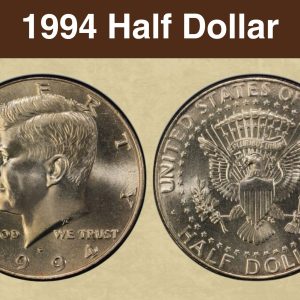
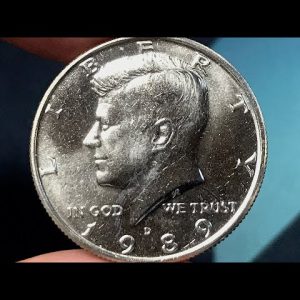
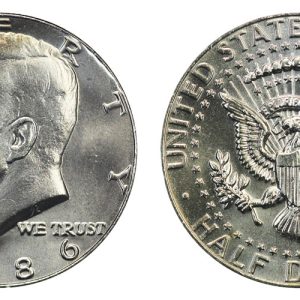
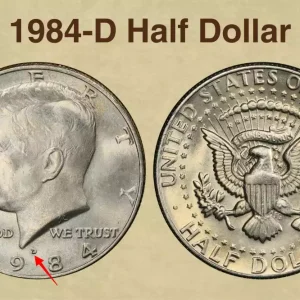
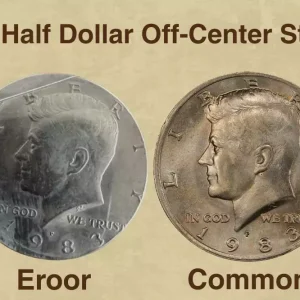
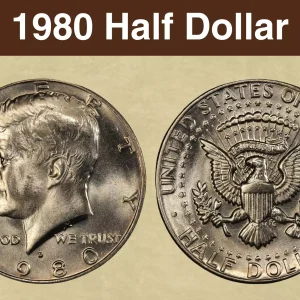
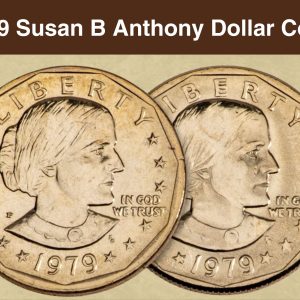
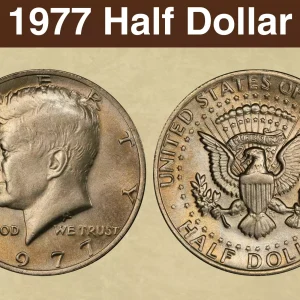
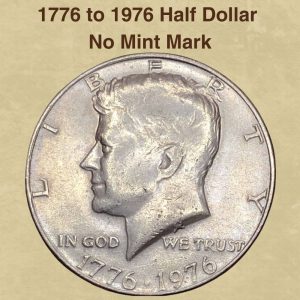
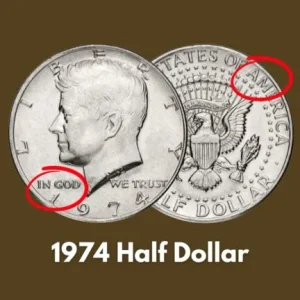
What is the error on the 1942 half dollar?
The 1942-S Walking Liberty Half Dollar is particularly notable for its filled die error.
What is a 1942-S half dollar worth?
A 1942-S half dollar is worth between approximately $25 and $50 in circulated condition and over $100 in uncirculated condition. The value can increase significantly based on the coin’s specific grade, with uncirculated (MS) grades ranging from about $60 to over $30,000 for a perfect specimen. Some valuable error varieties, like a double die obverse, can also fetch higher prices.
How to identify a valuable 1942 half dollar?
The 1942-S Walking Liberty half dollar usually has a weak, mushy strike. The rare examples with a strong strike go for a premium. Despite the weak strikes, the 1942-S can often be found with complete or nearly complete luster.
What is the rarest year of The Walking Liberty Half Dollar?
The rarest Walking Liberty half dollar is the 1921-D, which had the lowest mintage of the entire series with just 208,000 coins struck. The 1921 and 1921-S are also among the rarest dates due to their low mintages of 246,000 and 548,000, respectively. Other rare examples include certain early dates, particularly those with the mintmark on the obverse in 1917, and specific varieties like the 1938-D which had a low mintage.